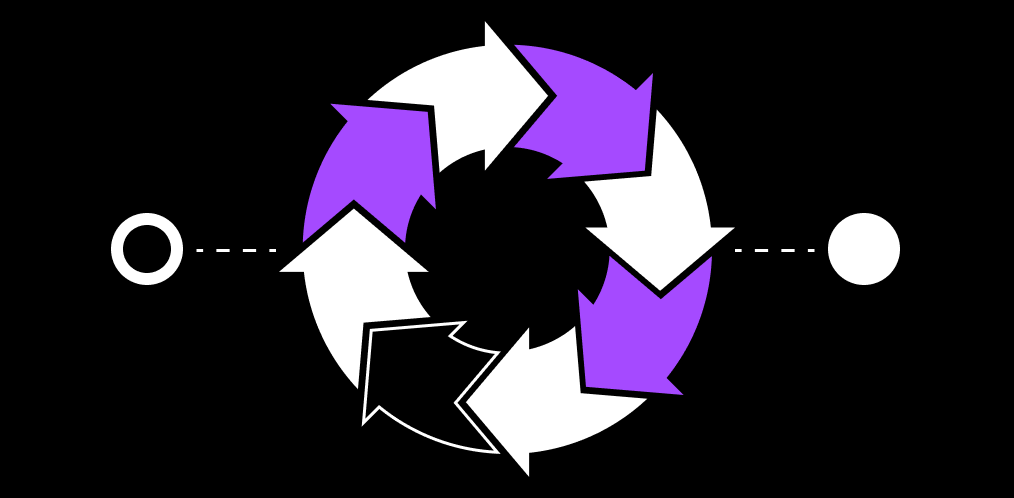
2023 OWASP API Security Top 10 Best Practices
After four long years since the original guidelines were created, the Open Web Application Security Project (OWASP) has now updated their Top 10…
{ "term_id": 162, "name": "Harold Bell", "slug": "harold-bell", "term_group": 0, "term_taxonomy_id": 162, "taxonomy": "wpx-authors", "description": "", "parent": 0, "count": 82, "filter": "raw" }

Key Takeaways
SDLC stands for Software Development Life Cycle. It’s a structured approach followed by software developers to plan, design, develop, test, and maintain software systems. Each phase has its own set of activities and deliverables that help ensure the successful development and implementation of high-quality software products.
The cycle of life is a useful metaphor to apply to technologies. Like human beings and animals, hardware and software enter the world, do their thing, and then pass on, but not before a new generation arrives to take their place. With applications, the cycle of life is known as the Software Development Life Cycle (SDLC). The SDLC is a project management framework comprising multiple stages: from investigation of problems and planning through coding, deployment, updating, and retirement. This article explores how the SDLC works, its component parts, and the methodologies used in its execution.
It’s worth taking a moment to distinguish the SDLC from the software product lifecycle, which is a related but different process. A software product is introduced to the market, and then hopefully enjoys a “life” that includes being updated with successive versions—before reaching “end of life,” when the product is taken off the market. In contrast, the SDLC refers to the software development and deployment process.
The SDLC is about creating software and guiding it through its life of deployment and retirement. At a higher level, though, the SDLC is about solving business and technology problems with software applications. And the process will ideally solve those problems in the most efficient and high-quality way possible.
The SDLC process brings together stakeholders from across an organization. These include software developers, of course, but also business analysts, project managers, line of business managers, testing and quality assurance (QA) teams, and IT operations. Security teams usually have some influence over the SDLC, as do network and storage managers.

The SDLC has seven stages, though some say there are eight. (More on this below.) Or, there may be fewer, depending on the organization. For instance, some teams may combine planning and requirements.
Identifying business and technology problems is where the SDLC begins. A financial services firm might want more intuitive stock trading software. A distribution company might need to make its warehouse more efficient through software. Realizing that there is a problem to solve is the spark that sets off the seven phases of the SDLC.
The unofficial eighth step of the SDLC is retirement. No software lives forever, so to speak. As it ages, stakeholders will find problems that need to be corrected, usually in a new version of the code. Or, they will decide to create an entirely new replacement application. The IT ops team needs to uninstall the old version and deploy the new one. That’s the true lifecycle. It never ends.
The SDLC can adapt to several predominant SDLC models, each of which aligns with a different software development methodology. The “waterfall” methodology is the oldest and simplest. In this approach, the stages of the SDLC flow in sequence, with one starting after the last one has finished. Planning begins and ends, kicking off requirements gathering, which starts and finishes, triggering development, and so forth.
In contrast, an SDLC based on the agile software development methodology comprises a series of ongoing release cycles. Each cycle produces a small, incremental change over the earlier release. It’s iterative and cyclical, with the SDLC repeating and going back on itself in loops. This approach enables stakeholders to identify issues in a project and resolve them before they mature into more serious problems.
The “lean” software development methodology creates an SDLC that mimics lean manufacturing principles, which encourage an efficient flow in work processes and continuous improvement. In an “iterative” SDLC, each cycle of development results in the deployment of an incomplete version of the app. The first iteration delivers a small subset of the requirements. Each iteration after that adds more requirements. By the final iteration, the app will embody all its requirements.
A “spiral” SDLC offers a development process driven by a project’s distinctive risk patterns. Stakeholders evaluate the project and determine which elements of the other process models need to be incorporated. A “V-shaped” SDLC involves running verification phases and validation phases in parallel. Each verification phase links to a validation phase, resulting in a v-shaped plot to describe the workflow.
The SDLC never stops evolving. As new modes of software development emerge, they will have an impact on the SDLC. The underlying goals will never change, however. The SDLC is always about producing the best quality software in a reliable, fast, and efficient process.
Following the SDLC yields many benefits for organizations. But, what is SDLC? The SDLC meaning stands for Software Development Lifecycle. It ultimately enhances project management and control, providing a structured framework for development phases and leading to better communication and collaboration among team members. SDLC contributes to reduced development costs and faster time-to-market by streamlining processes. This approach produces higher-quality software with fewer defects, promoting overall product reliability.
For comprehensive security, consider integrating API security seamlessly into SDLC practices. Embrace SDLC’s structured methodology to optimize software development, ensuring efficiency, quality, and successful project outcomes from inception to deployment.
Selecting the appropriate SDLC model for your project involves assessing various methodologies like Waterfall, Agile, Lean, Iterative, Spiral, and V-shaped. Then, evaluate project requirements, timelines, and team dynamics.
For example, Waterfall is ideal for well-defined projects with stable requirements, while Agile suits dynamic environments requiring iterative development. Lean focuses on efficiency and eliminating waste, Iterative allows flexibility, Spiral manages risk, and V-shaped emphasizes thorough testing. Consider your project’s nature, size, and adaptability when comparing SDLC models, ensuring alignment with your development goals and team dynamics for successful software delivery.
It’s essential to integrate security into the Software Development Lifecycle. With DevSecOps practices, security becomes an integral part of each SDLC phase. Employ automated security testing and continuous threat monitoring to detect vulnerabilities early in development.
Noname Security’s API Security Platform aligns seamlessly with DevSecOps principles, offering a proactive approach. Request a demo to explore how Noname’s platform enhances security within the SDLC, providing automated security testing and continuous threat monitoring. Elevate your development process with the assurance of robust API security integrated into the core of your software lifecycle.
Effectively implementing SDLC requires following a few best practices. Thorough planning sets the stage for successful development. Then, begin with clear requirements gathering, ensuring a solid foundation. Iterative development secures a final product, and continuous testing throughout the lifecycle enhances the software’s quality. Avoid common pitfalls by addressing issues promptly and fostering collaboration among teams.
For a comprehensive approach, integrate API security for DevSecOps into your SDLC, ensuring a secure development environment. Strive for a well-structured and adaptive SDLC, incorporating these best practices to optimize development processes and deliver high-quality software.
Experience the speed, scale, and security that only Noname can provide. You’ll never look at APIs the same way again.